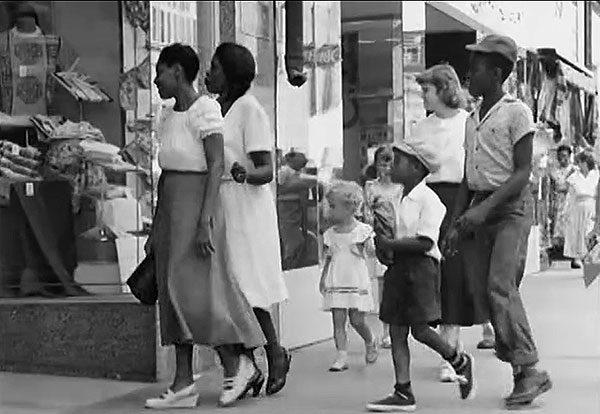|
Tulsa Timeline
GREENWOOD
a subdued history |
| 1950s |
|
|
 |
|
Integration
In the 1950s, the national integration movement allows African Americans to shop outside of their once segregated communities. For
individual consumers and families, this meant having the ability to purchase goods and services in economies of scale which allowed
them to get more value for their money. Unfortunately, this resulted in money being spent outside the Greenwood community, and as
a result, money that once circulated throughout Greenwood started to trickle out into the newly desegregated population. Over the next two
decades, this would take a heavy monetary toll on the wealth of Greenwood. |
|
|
|
|
|
Sources
| [1] Brown, D. (2021, February 04). Red Summer: When Racist Mobs Ruled. How a Pandemic of Racial Terror Led to the 1921 Tulsa Race Massacre. American Experience. PBS. |
| https://www.pbs.org/wgbh/americanexperience/features/t-town-red-summer-racist-mobs/ |
|
| [2] Burch, R., Reid, R., & Ferguson, K. (Producers). (2021). Tulsa Race Massacre: 100 Years Later [Video]. PBS. |
| https://www.pbs.org/video/tulsa-race-massacre-100-years-later-vdv9tx |
|
| [3] Silvers, J., Brown, D., & Stover, E. (Producers). (2021). Tulsa: The Fire and the Forgotten [Video]. PBS. |
| https://www.pbs.org/video/episode-1-zew2v8 |
|
| [4] PBS News. (2024, June 12). Oklahoma’s Supreme Court Dismisses Lawsuit from Last 2 Survivors of Tulsa Race Massacre Seeking Reparations. |
| https://www.pbs.org/newshour/nation/oklahomas-supreme-court-dismisses-lawsuit-from-last-2-survivors-of-tulsa-race-massacre-seeking-reparations |
|
 |
|


























